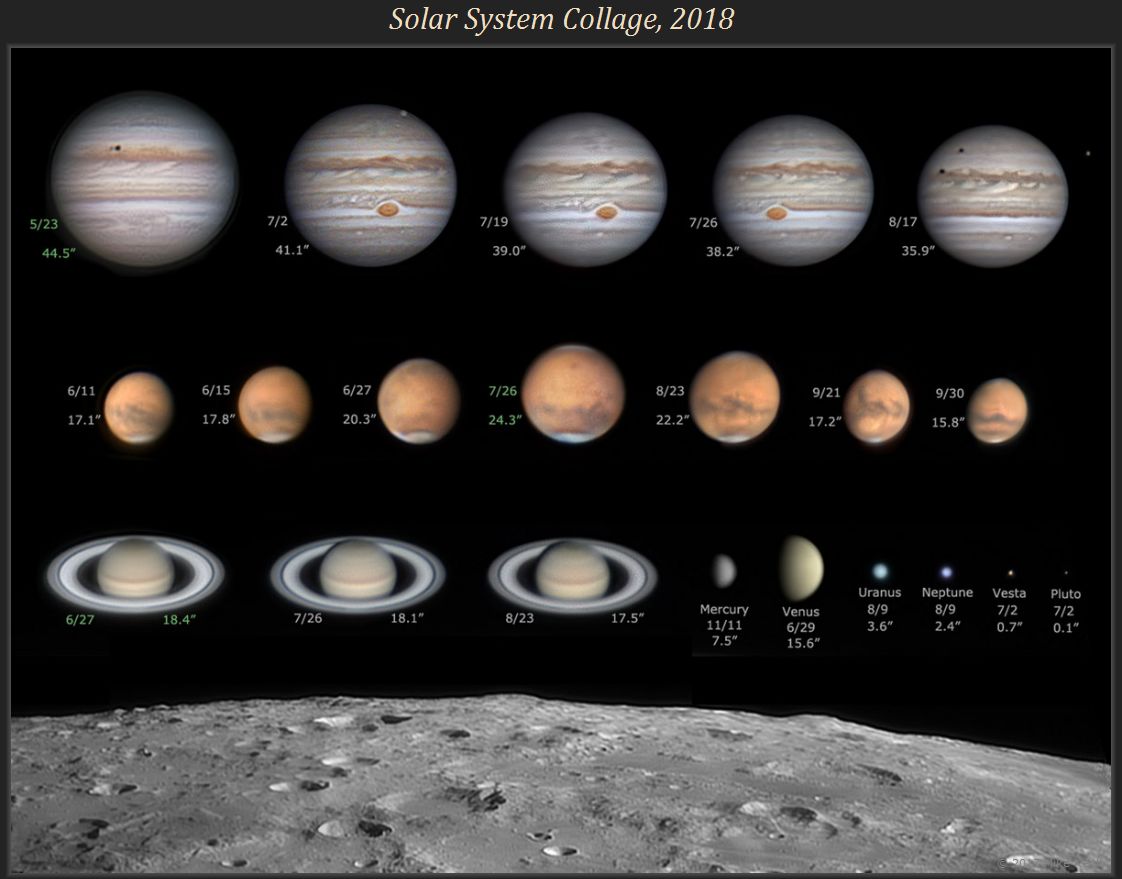
Click here for a higher-resolution image

Click here
for a higher-resolution image
This composite image is a collection of planet and moon shots taken during the summer of 2018 from about 40 degrees north latitude on Earth. Several features of the planets are captured here. The change in apparent size of the outer planets as they move toward and away from opposition is clearly seen (each planet image is labeled, below the date, with its apparent diameter in arc-seconds). The image of each outer planet that's closest to oppsition is labeled in green. On Jupiter, note that the left and right edges of the planet are fairly sharp at opposition, but in later images the left limb is soft. This is because the sun is exactly behind the planet at opposition, but afterward the sun is behind and to the right, making the left edge be a soft "terminator". We don't usually think of Jupiter and Saturn going through phases, but of course they do - it's just that the minimum percentange lit they ever have is quite high (Jupiter's minimum phase is 99.1%, Saturn's is 99.7%).
On Saturn, notice that the rings are noticeably brighter at opposition. Every outer planet is brightest at opposition, but with Saturn there's a secondary reason, called the Seeliger Effect, that increases the brightness even more due to reflections from the ice pieces in the rings coming straight back to the observer. Also notice that there's no shadow of the ball on the rings at opposition, but there is a shadow on the left side after. This is for the same reason we noted with Jupiter - after opposition the Sun is behind and to the right of Saturn, so there's a shadow from the ball that extends behind it and slightly to the left. On Mars you can notice that it seems to be more blurry or featureless prior to opposition, and somewhat more detailed after. This is due to a large dust storm that covered most of the planet for a few months before opposition, blotting out most of the surface details.
Every photo here, except Pluto, was taken with the same equipment: a Celestron C8 with Televue 2x PowerMate and ZWO ASI 224MC camera operating at a focal length of 4000mm. The resulting image scale is about 0.2" per pixel, which means that every object except Pluto presents a clearly resolved disk, the smallest being Vesta at about 3.5 pixels. Each image is the result of stacking the best-quality frames from a 3-to-5 minute high-frame-rate video. Pluto was captured differently, using a stack of 30-second photos captured with a 140mm refractor.